Gaiters for hiking
Leg protection
When you start hiking you tend to have a picture in your mind about what a ‘hiker’ or ‘bushwalker’ looks like. For many, the stereotype includes a broad brimmed hat, boots, kaki clothing, big pack, and of course, gaiters. While this may have been what the typical Australian outdoors person looked like in the past, things have since moved on. Hiking gear and attitudes have changed and with that so has the ‘uniform’.
In my case its rare you will ever see me in any of these items but having said that I do wear gaiters. In fact, as I put this article together I realised I wear gaiters much more often than I thought. They just don’t look like the stereotype that people expect.
In this article we look at the types of gaiters available to hikers today and provide guidance on when you should consider wearing them.
What are gaiters?
In simple terms, gaiters are a form of protective clothing although calling them ‘clothing’ is a bit of stretch. They are essentially pieces of material that are worn over your footwear and rise up the legs to a varying degree in an attempt to protect you from both the physical environment as well as wildlife such as ticks, leaches and snakes.
‘Old school’ gaiters were often made of heavy leather or canvas and came up to just below the knees. These days the range is much broader and depending on what you are trying to protect yourself from, they can be quite minimal in construction or go all the way up to the more traditional models that are longer and more robust.

Gaiters – all shapes and sizes
Why would you want to use gaiters?
For many years I resisted wearing gaiters only wearing them on certain hikes and mainly in areas where snake contact was a concern. In fact, there is one hike in my local area where I know I will come in contact with snakes on a trail that is overgrown so will always reach for my gaiters at a certain point on that trail. Over the years my view has changed and my reasons for wearing gaiters have broadened.
So why should you wear gaiters on a hike?
- Protection from sharp vegetation such as Spinifex given it can penetrate clothing
- Protection from snakes but they need to be long and made from a heavy material e.g. canvas
- Protection from Leaches and Ticks
- Protection from mud to keep your lower legs clean particularly on trails such as the Tasmanian South Coast Track or the Victoria’s Great Ocean Walk
- Keeping dirt and debris out of your trail runners
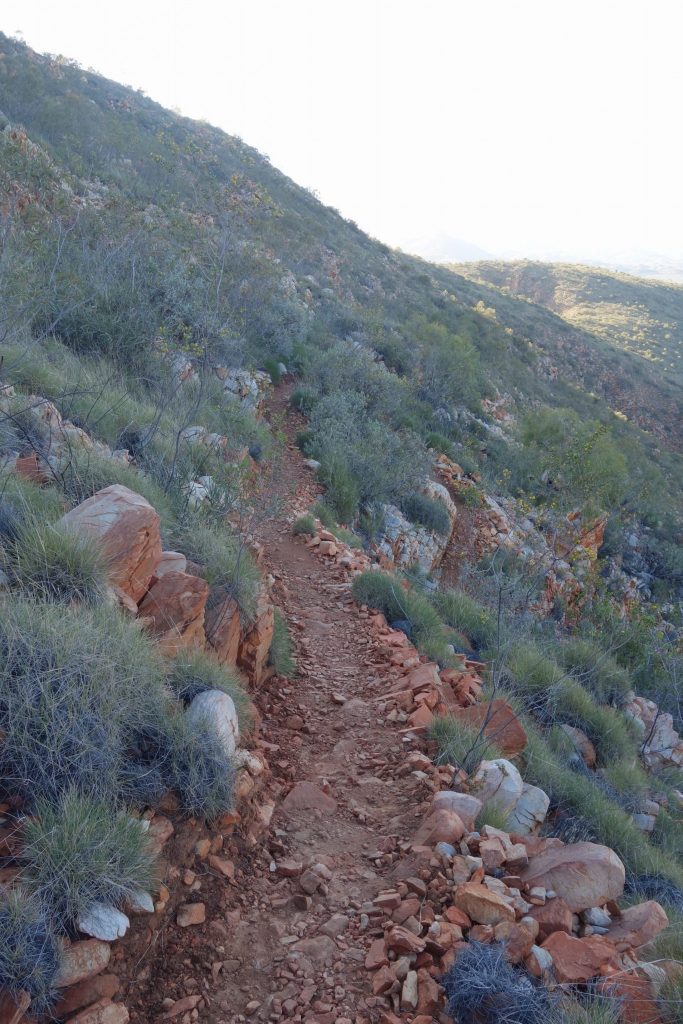
Switchbacks on the Larapinta Trail. Stay on the trail and you’ll be fine. Go ‘bush’ and the Spinifex will pierce the toughest clothing

Muddy section on the South Coast Track. The only time I didn’t test the mud with my trekking poles on this track had me I sinking crotch deep on both legs. If I hadn’t been wearing gaiters, my trail runners would have been pulled off as I worked to extract myself from the med – I would have then spent the next 30+ minutes digging a one metre deep hole to retrieve them!
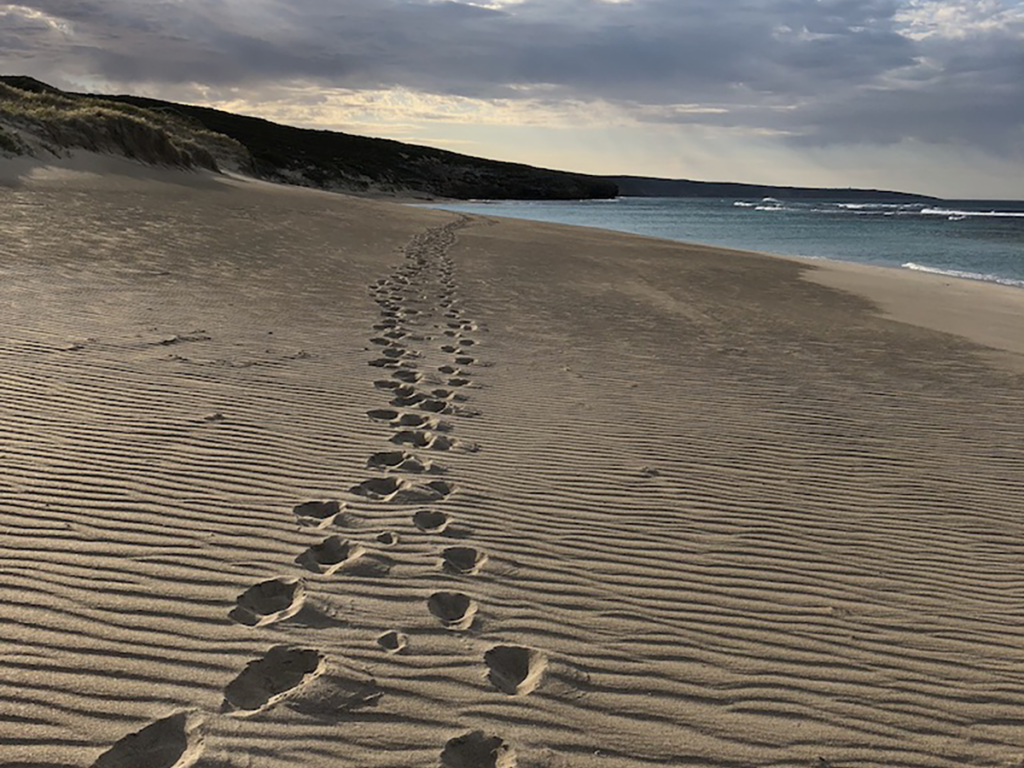
Beach walking on Kangaroo Island. This sand was very soft and grainy – without gaiters, our footwear would have filled with sand
Gaiter types
Lycra gaiters
Lycra trail gaiters are a very lightweight gaiter that covers the front of the shoes and comes up the leg just above the ankle. Their sole purpose is to keep sand, dirt and other debris out of your trail runners but they won’t provide any serious protection for things like Spinifex, leaches, snakes or ticks.
Most lycra gaiters will have a small hook on the front that connects to the shoe lacing or purpose built hook, and will also come with hook and loop velcro at the rear to connect the gaiters to the back of the shoe.
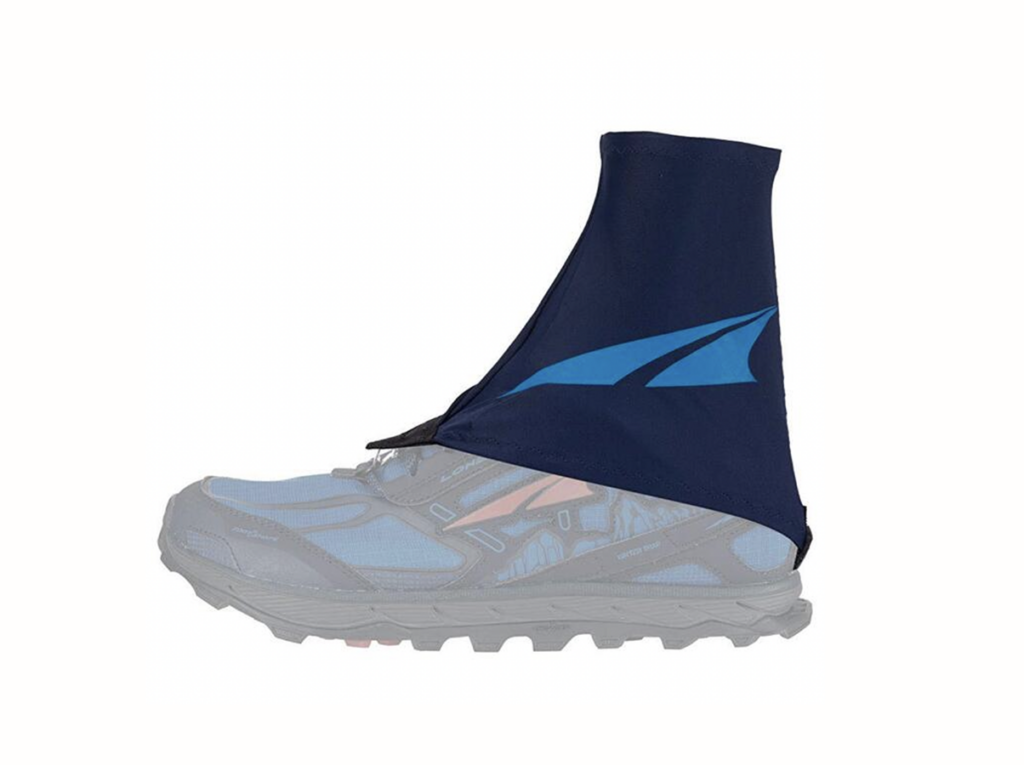
Altra Trail Gaiters
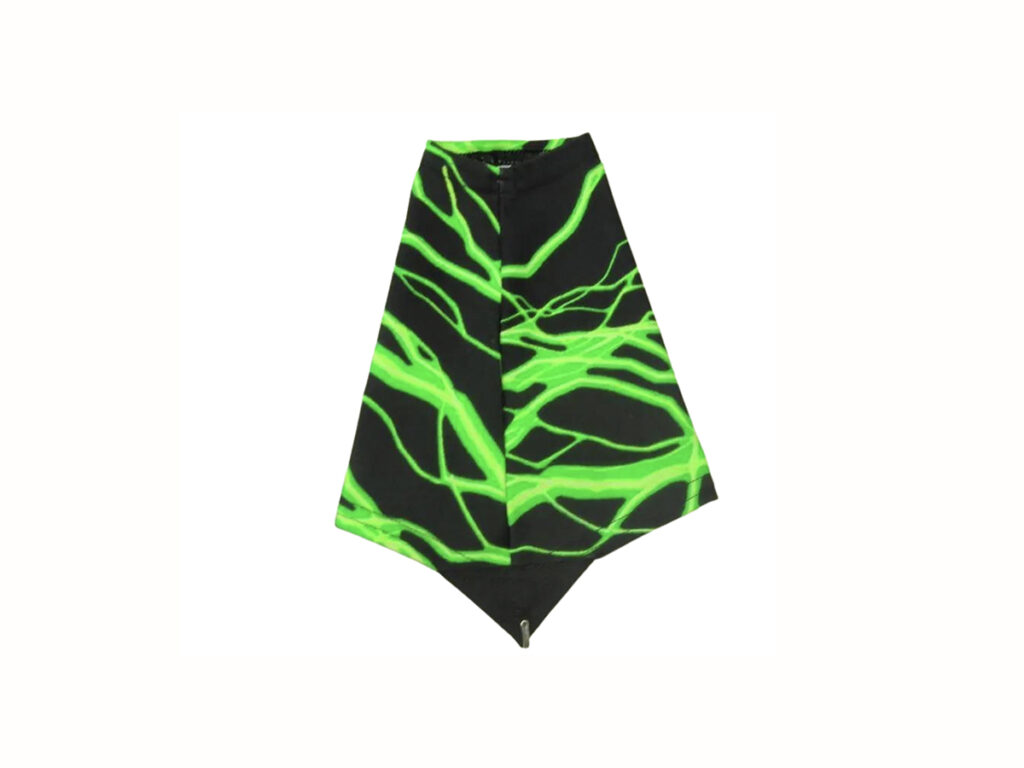
Dirty Girl Gaiters. These gaiters are known for their lairy colours and patterns
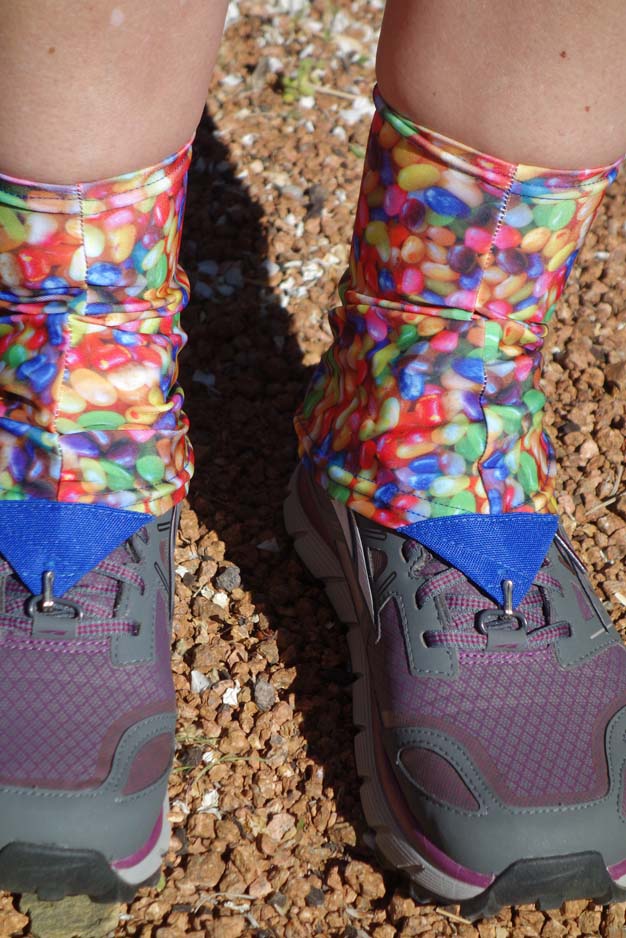
Gaiter hook at the front of the shoes with a pair of Dirty Girl gaiters hooked on
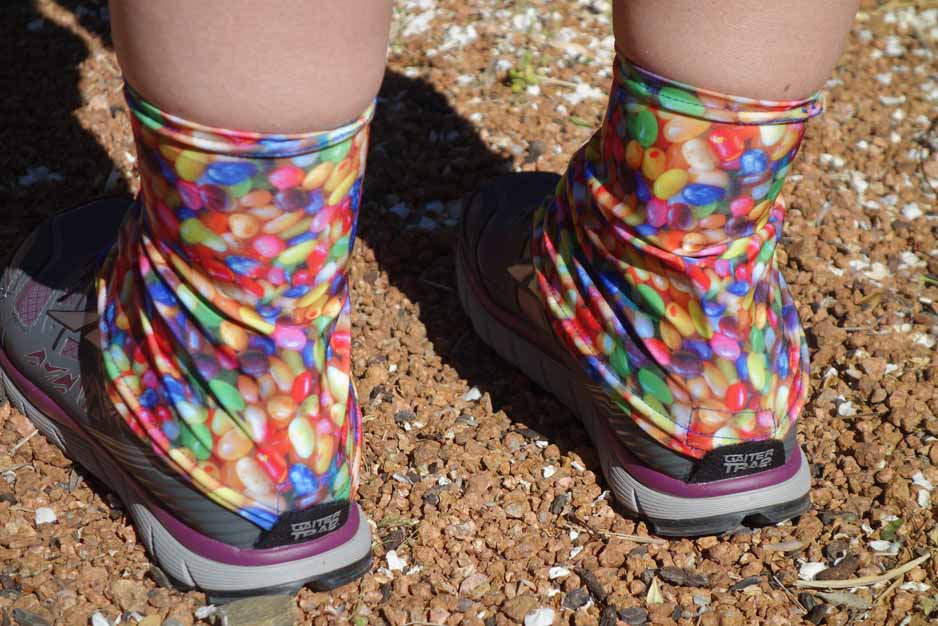
Built-in velcro gaiter trap (on Altra trail runners) to hold the lycra gaiter in place at the rear of the shoe. Most shoe brands don’t have this feature but you can very easily retrofit them with hook and loop velcro
Mid weight gaiters
As the name suggests, these gaiters sit between the ultra lightweight lycra gaiters and the heavy duty gaiters. Typically these gaiters also sit lengthwise between the two.
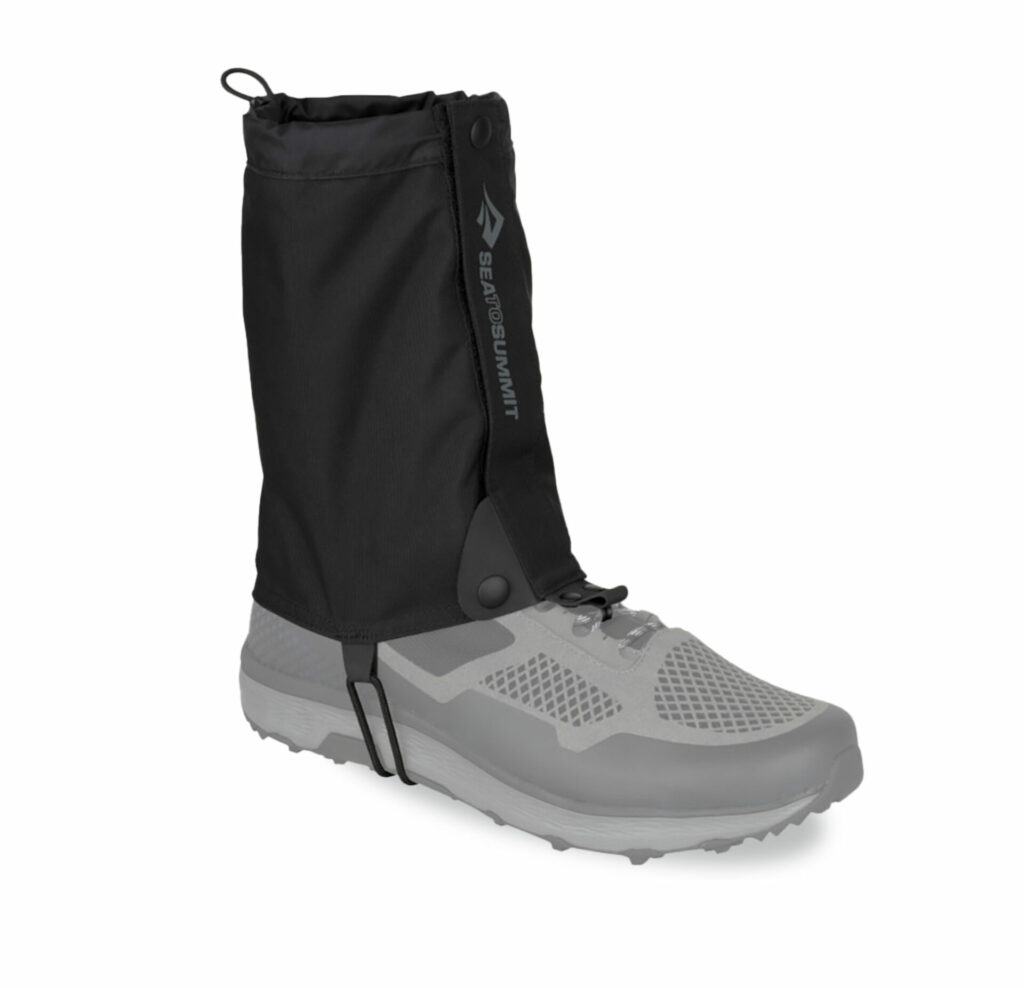
Sea to Summit Spinifex Gaiters
Heavy duty gaiters
These gaiters are at the other end of the gaiter spectrum. Stopping just under the knee they are made with a heavy duty canvas, nylon material, or in the case of home made versions I’ve seen, leather.
If you’re buying gaiters specifically for snake protection then buy a pair of heavy duty canvas gaiters. But take note, no gaiter, no matter how good, will be 100% snake proof. If you’re buying a general purpose gaiter then the nylon gaiters do the job well and are typically waterproof.
This type of gaiter will usually have a cord or velcro strap at the top to hold the gaiter in place and will restrict access by things like leeches. They will also have a heavy grade nylon/plastic replaceable underfoot strap that keeps the gaiter in place but just as important, it helps keep the shoe in place for those times when you sink into the mud.
The inside leg side of heavy duty gaiters will typically have a heavy grade scuff guard, often kevlar, that prevents wear and tear on the gaiters, and wear from your legs and feet brushing past each other. This is also how you tell which gaiter goes on which leg given heavy duty gaiters always have a right and left gaiter.
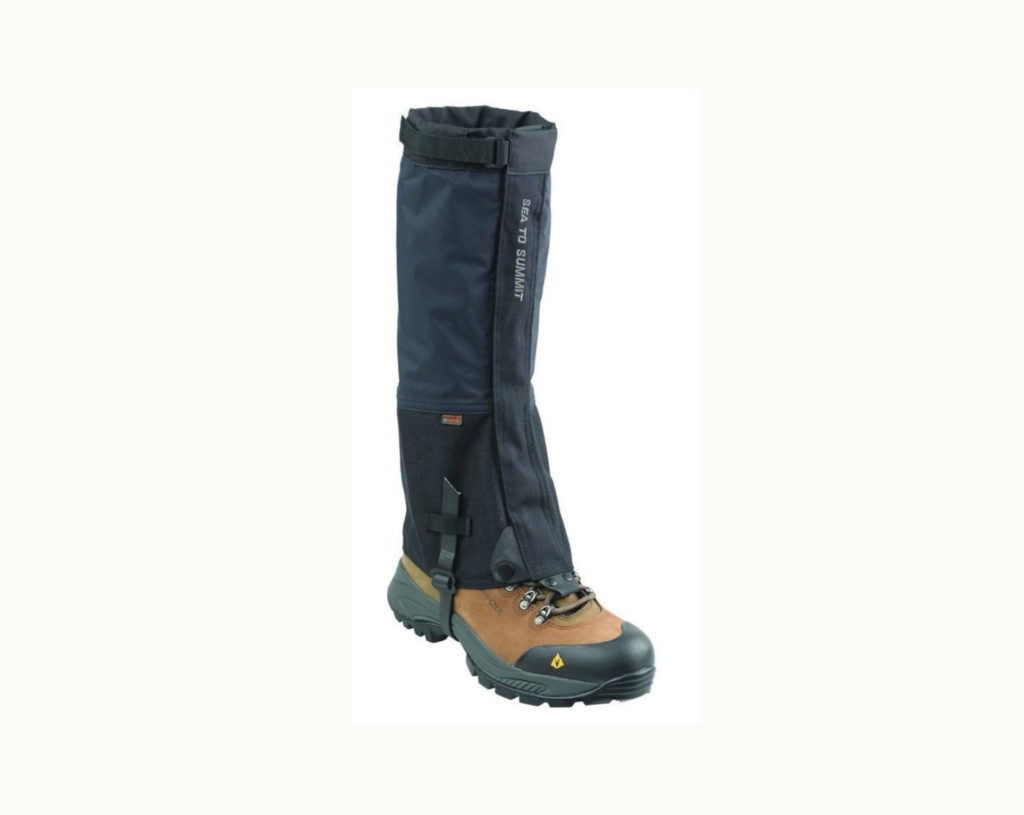
Sea to Summit Quagmire eVent Gaiters
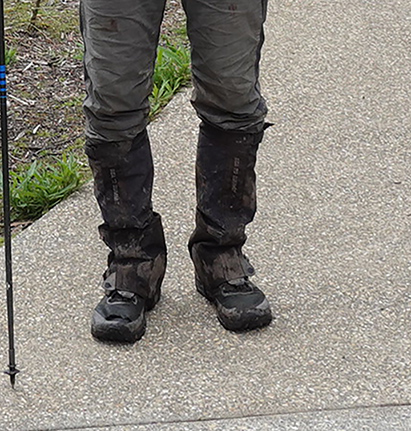
Heavy duty gaiters worn with trail runners
Sizing
Getting the right size gaiters is key to them doing for what they are designed. Go to0 small and they are hard to do up and won’t be comfortable. Get them too big and they will leave gaps that means they won’t perform well. Use the online sizing chart to ensure you choose the right sizing.

Gaiters closeup on my Scarpa SL Activ Leather Boots. Given my foot size ideally I need a XXL gaiter rather than an XL. These gaiters work really well with my size 15 trail runners

This image shows an area in the middle of the sole with no lugs which means that the strap will stay in place and isn’t sitting on the top of the lugs. This is also important for heavy grade boots as well
Final thoughts
As mentioned, I don’t always use gaiters but if I’m doing a long distance hike I’ll typically be using trail runners and will pair them with a short lycra gaiter to keep all the debris out. For those times where mud and/or snakes are an issue I’ll go for the heavy duty gaiters, typically with trail runners. While I do own a pair of mid height gaiters, I tend to sit on the extremes in my gaiter choice and in all honesty haven’t used mid height versions in the past six years.
When choosing gaiters for your hiking adventures you need to consider what you’re trying to achieve but don’t be surprised if like us, two options will cover all the bases.